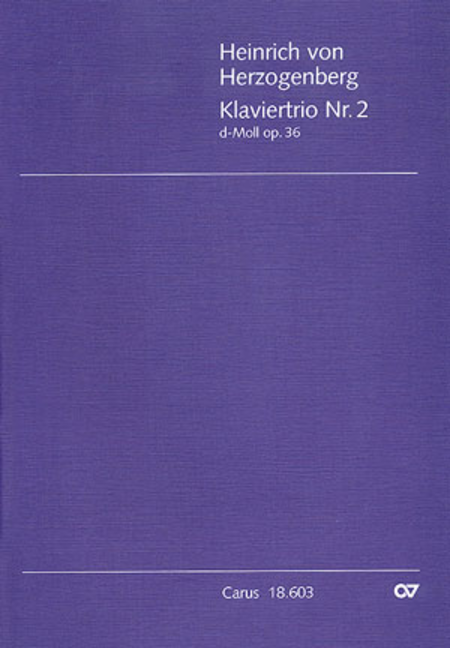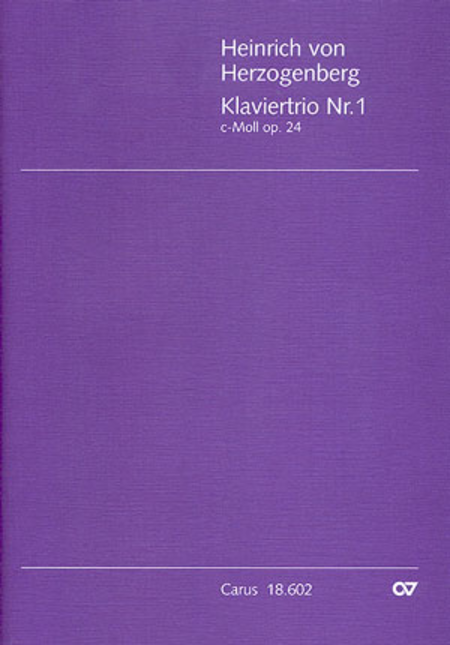Heinrich von Herzogenberg (1843 - 1900)
 Autriche
Autriche
Heinrich Picot de Peccaduc, Freiherr von Herzogenberg (10 June 1843 – 9 October 1900) was an Austrian composer and conductor descended from a French aristocratic family.
He was born in Graz and was educated at a Jesuit school in Feldkirch and al ... (Read all)
Source : Wikipedia
 Autriche
AutricheHeinrich Picot de Peccaduc, Freiherr von Herzogenberg (10 June 1843 – 9 October 1900) was an Austrian composer and conductor descended from a French aristocratic family.
He was born in Graz and was educated at a Jesuit school in Feldkirch and al ... (Read all)
Source : Wikipedia
CELLO - VIOLONCELLO Free sheet music of Heinrich von Herzogenberg
7 sheets found sorted by:
Search on #CELLO - VIOLONCELLO
| ||||||||||
© 2000 - 2024
Home - New releases - Composers
Legal notice - Full version














